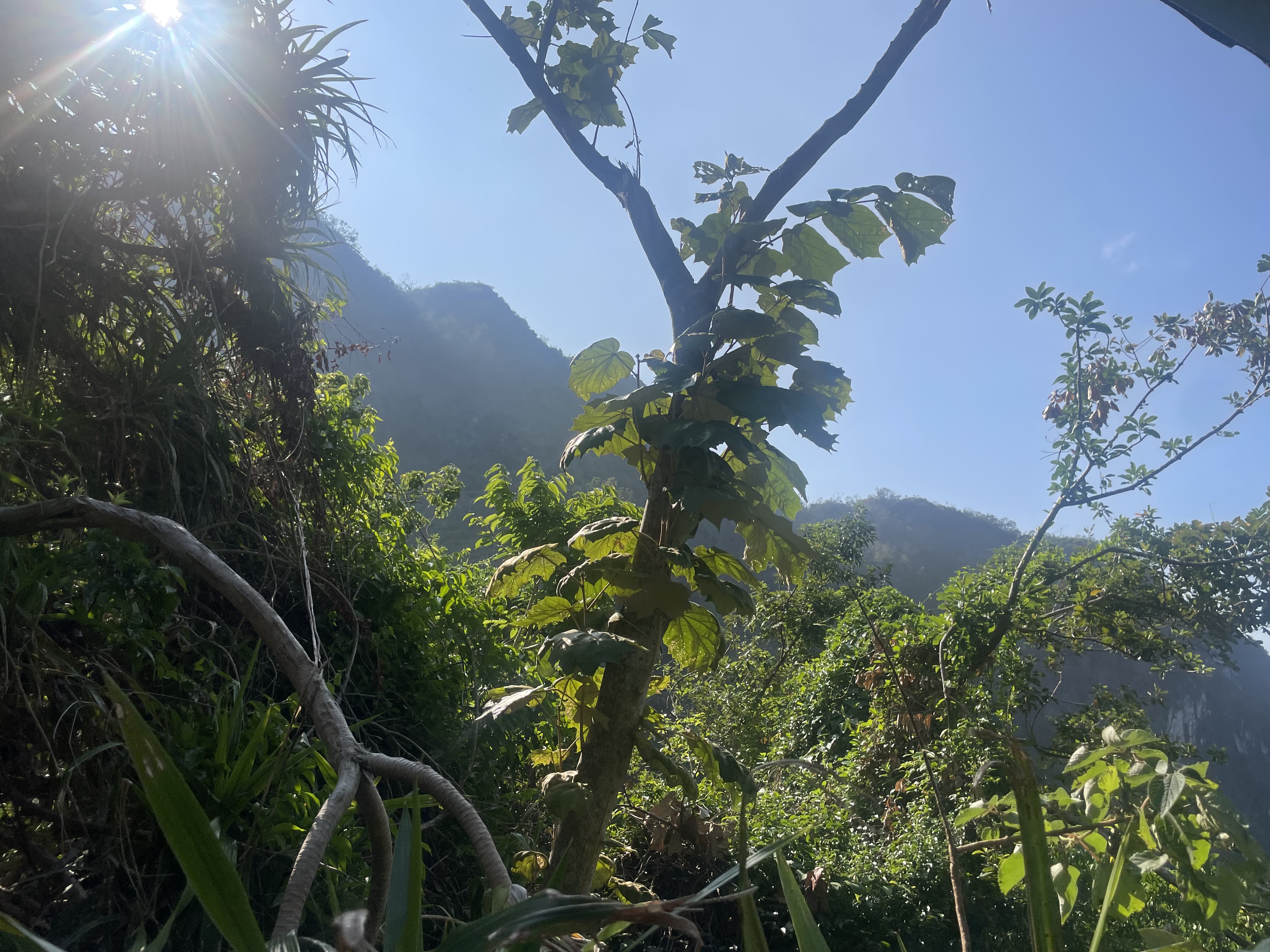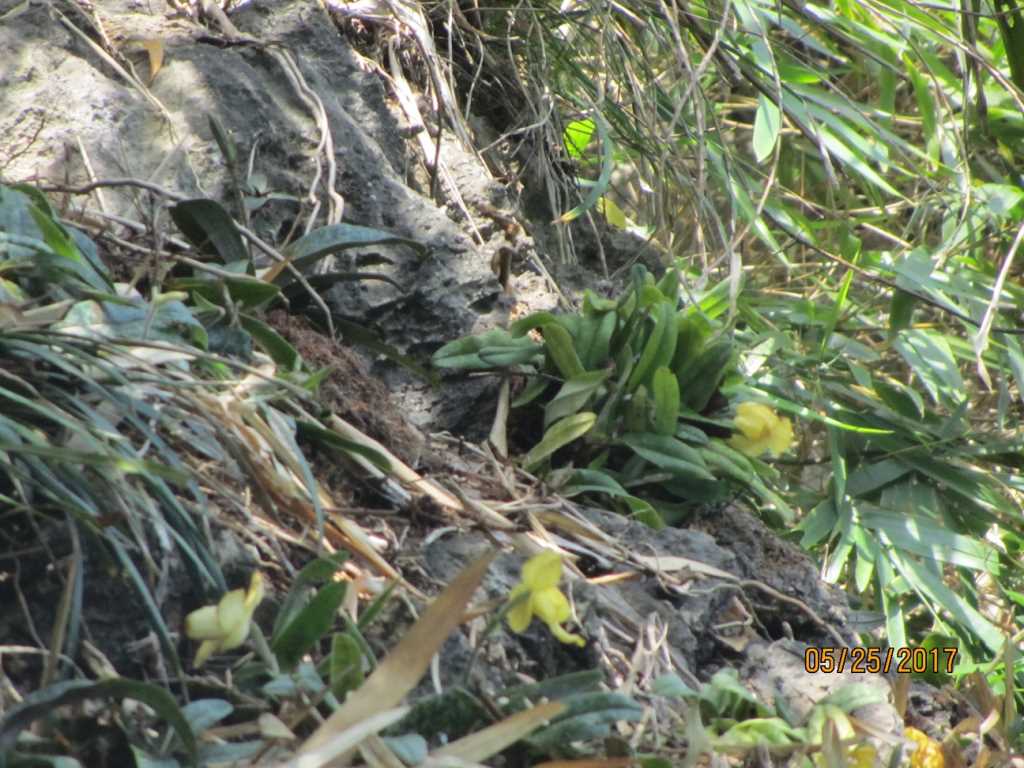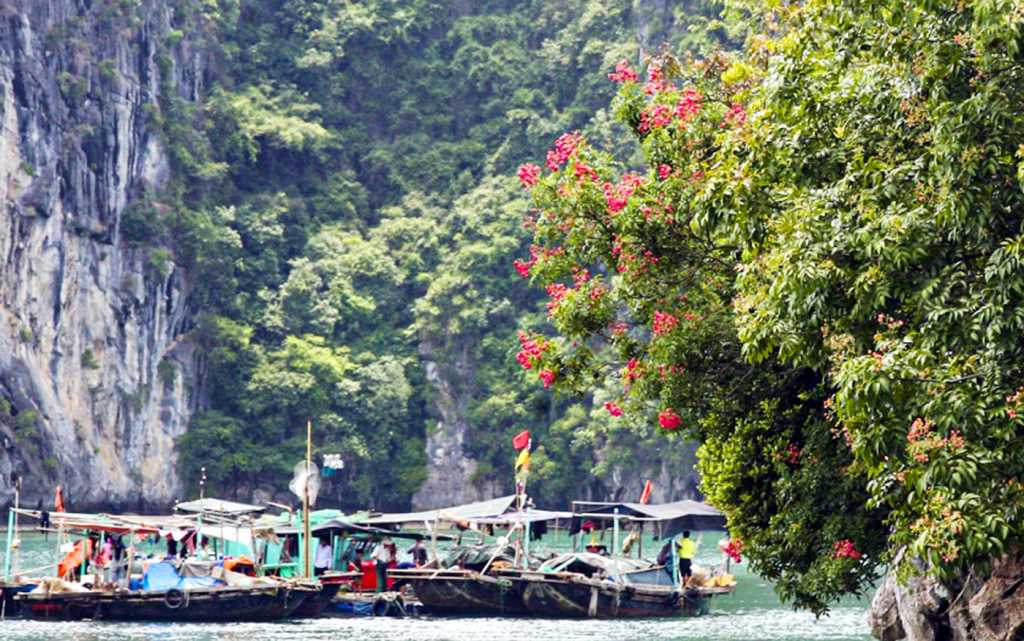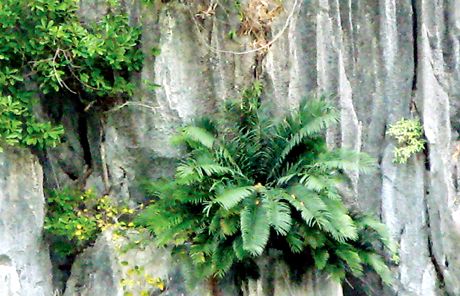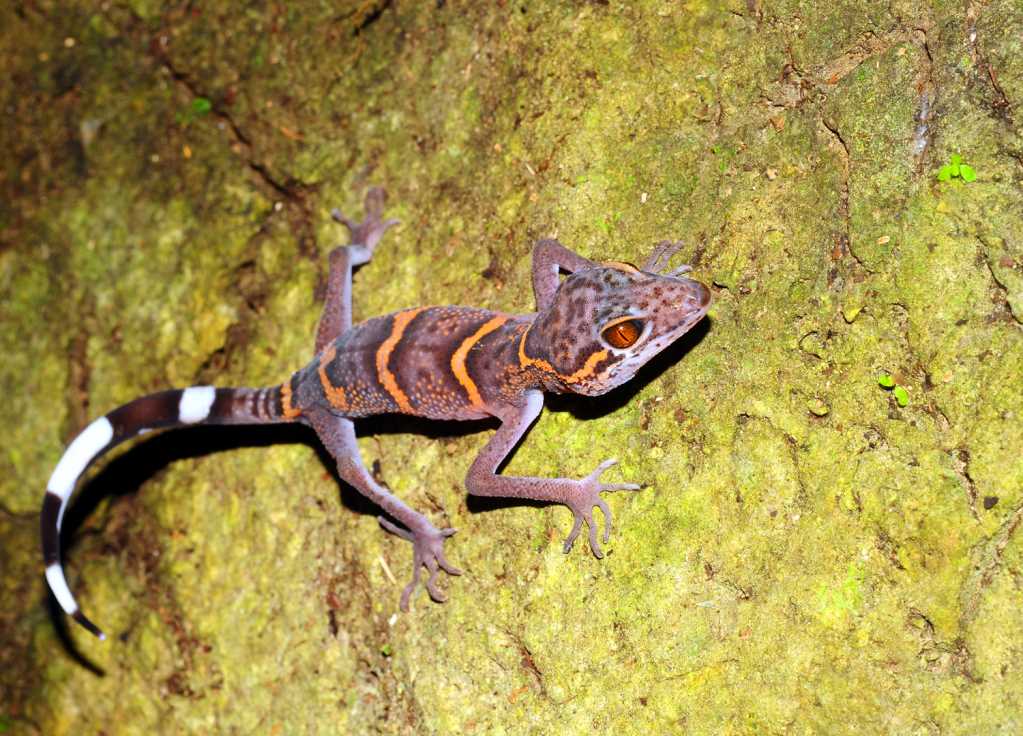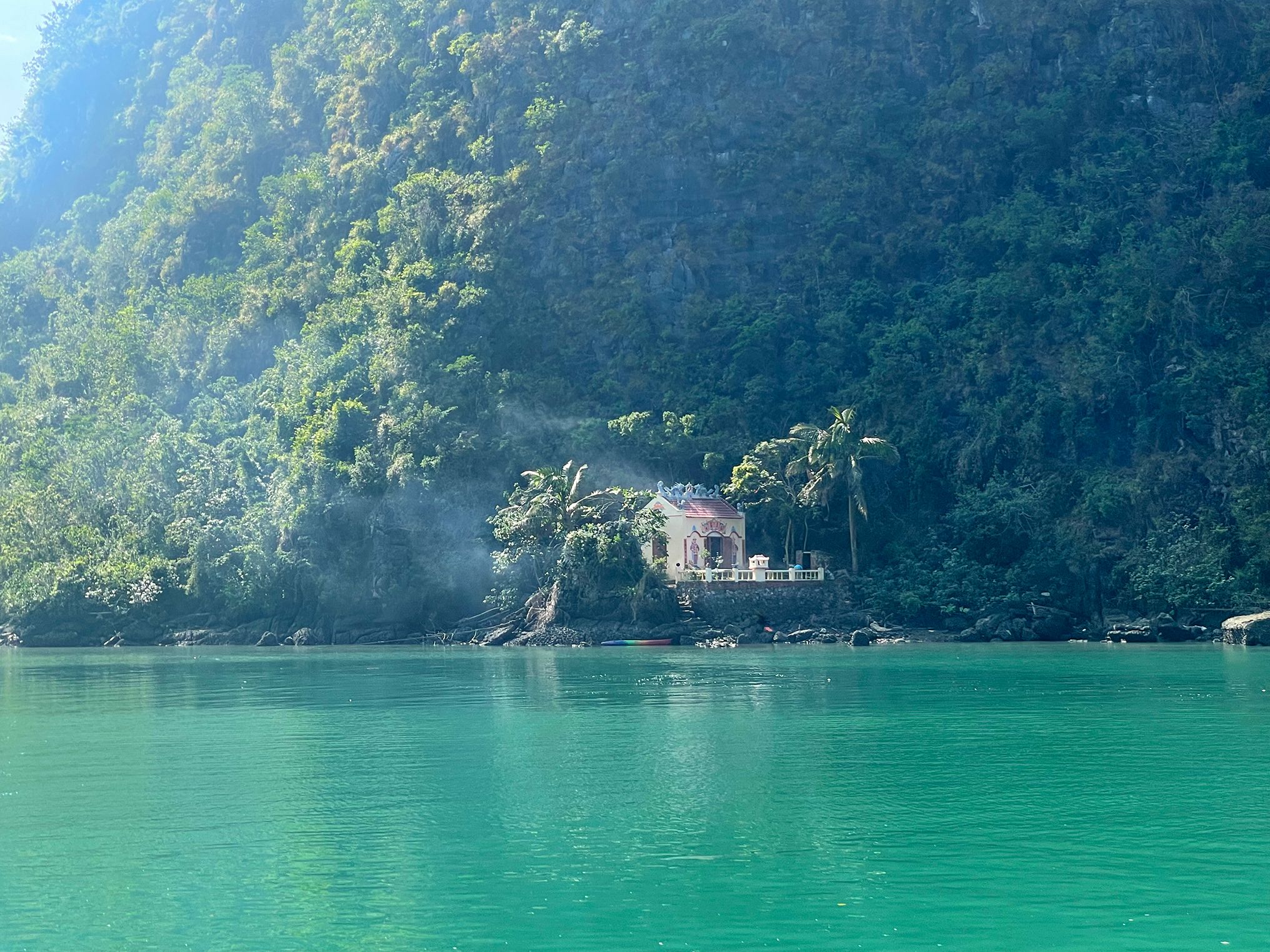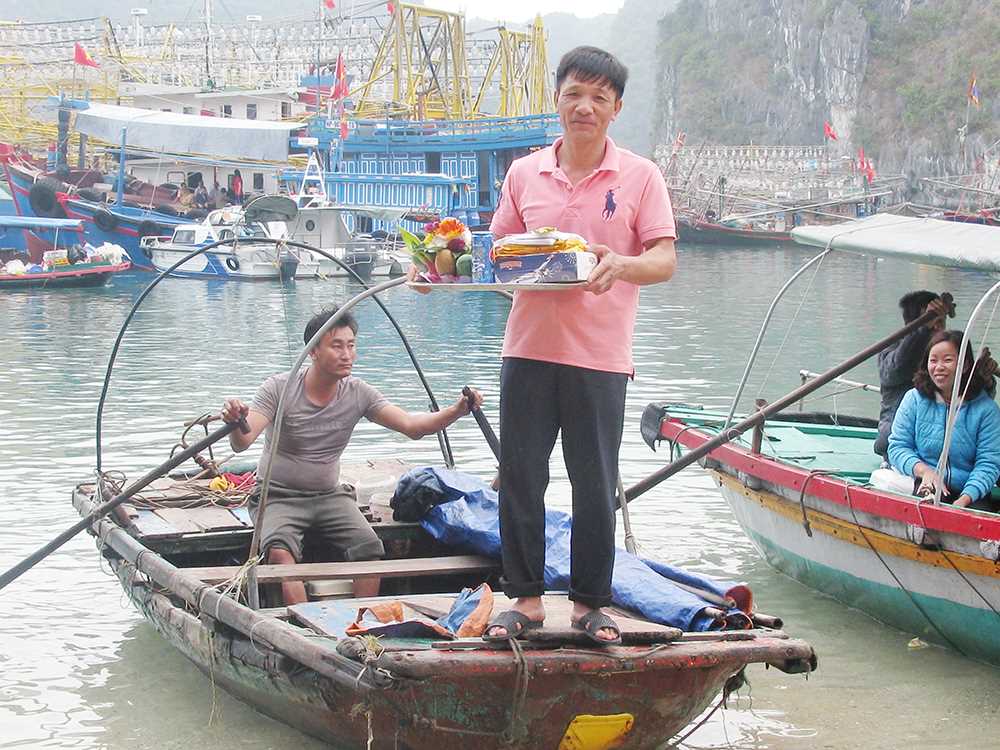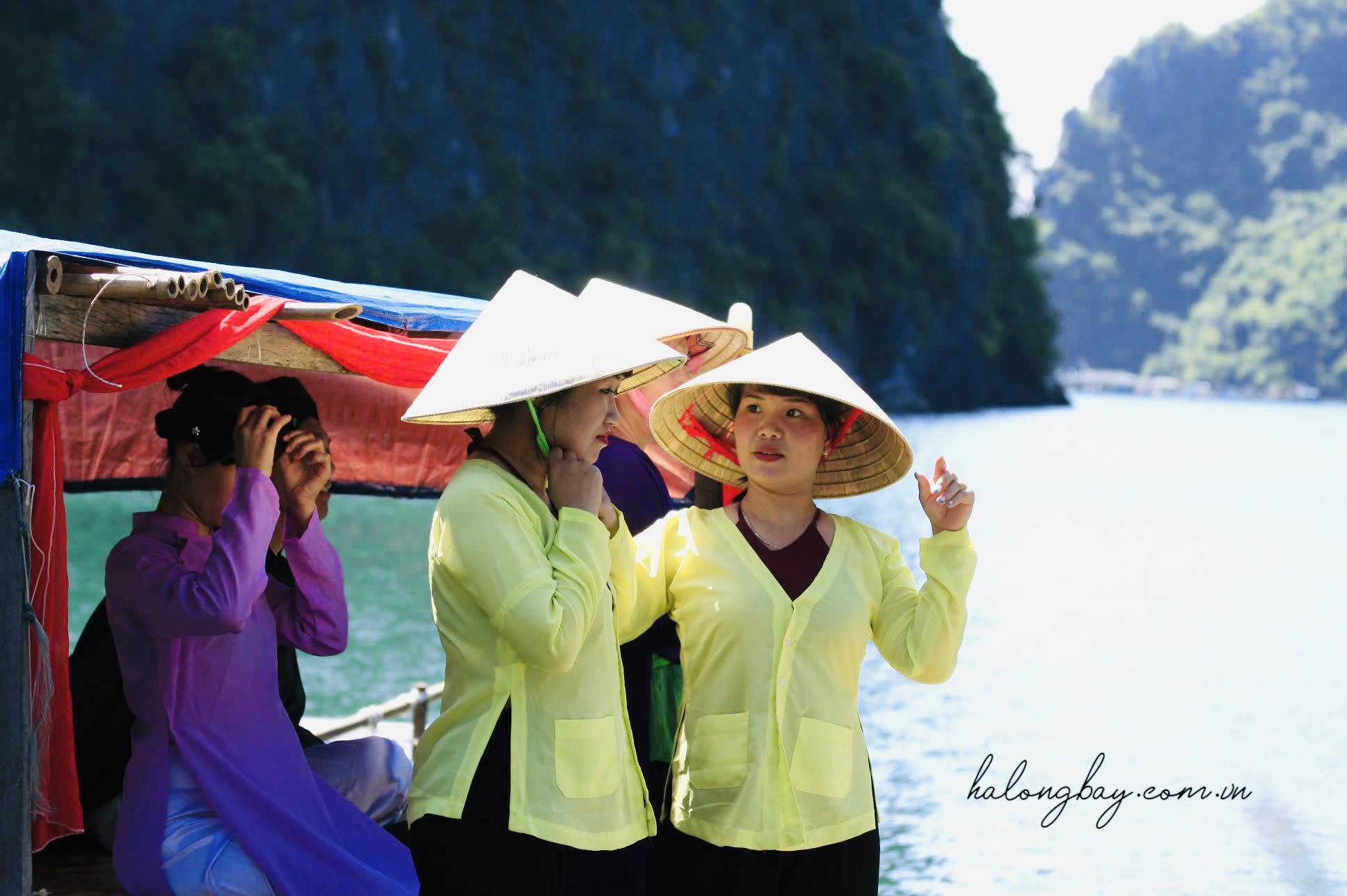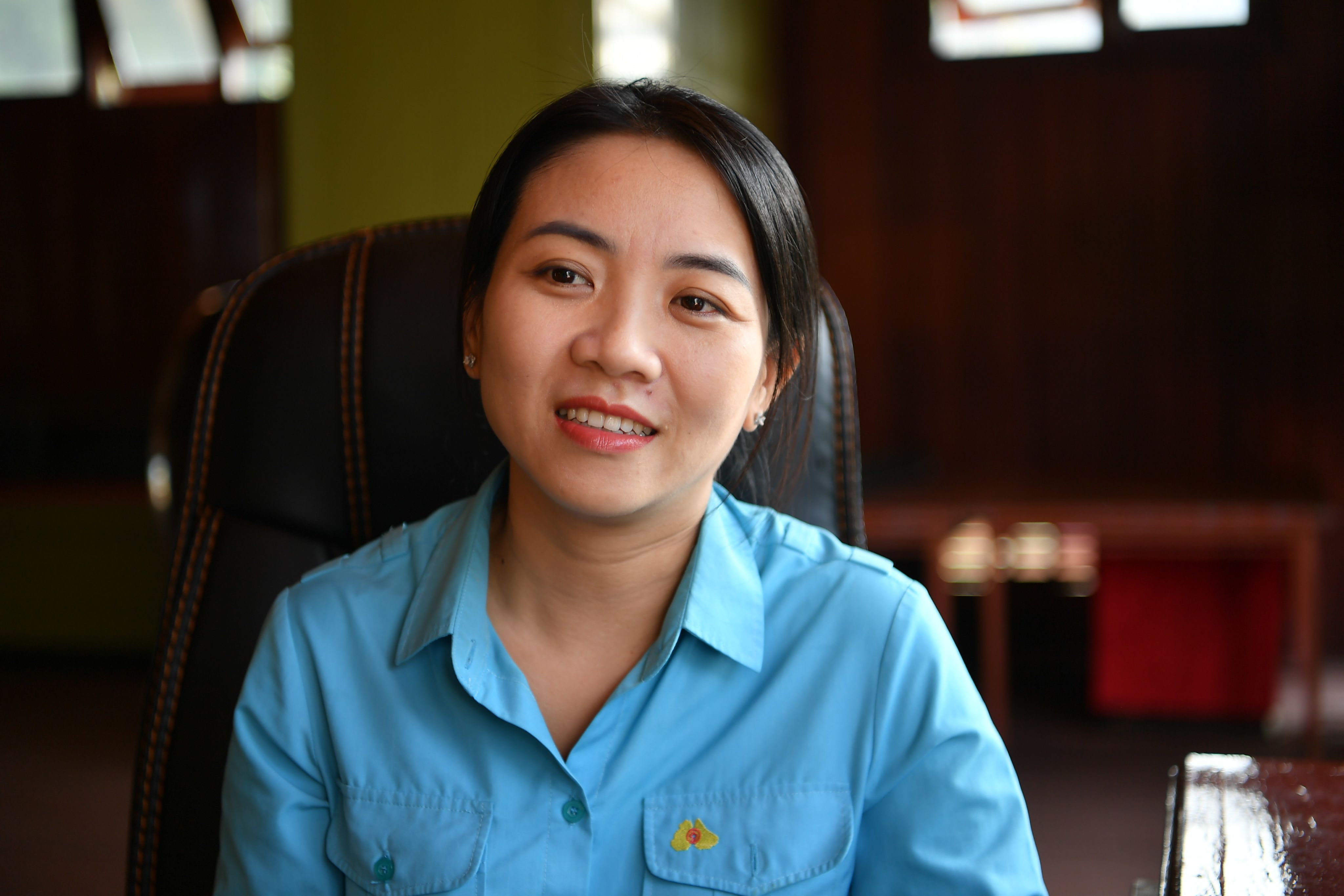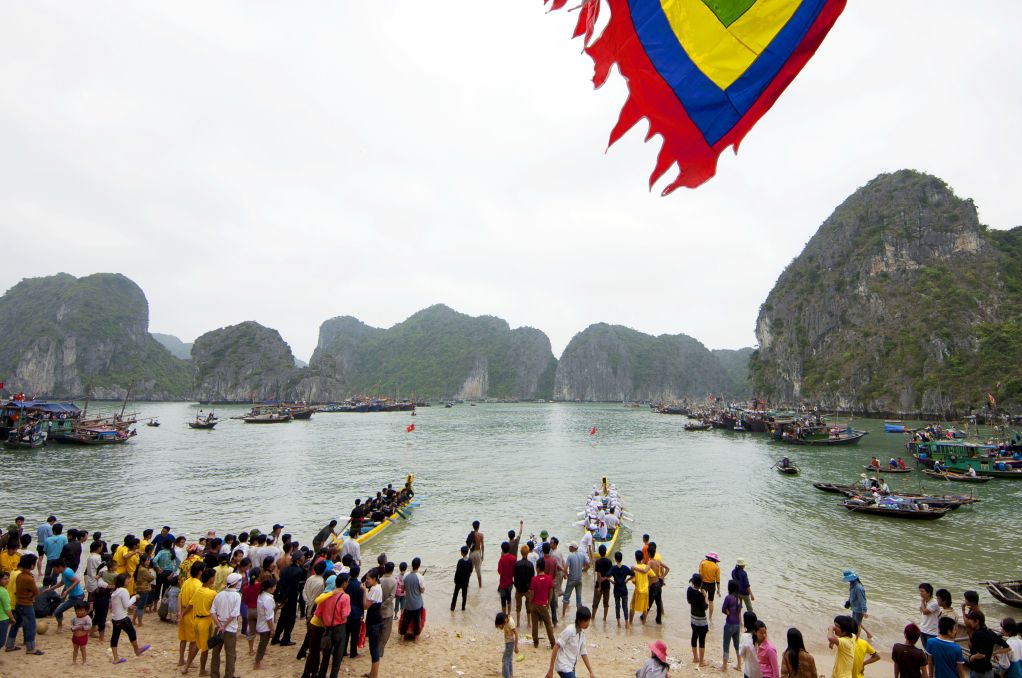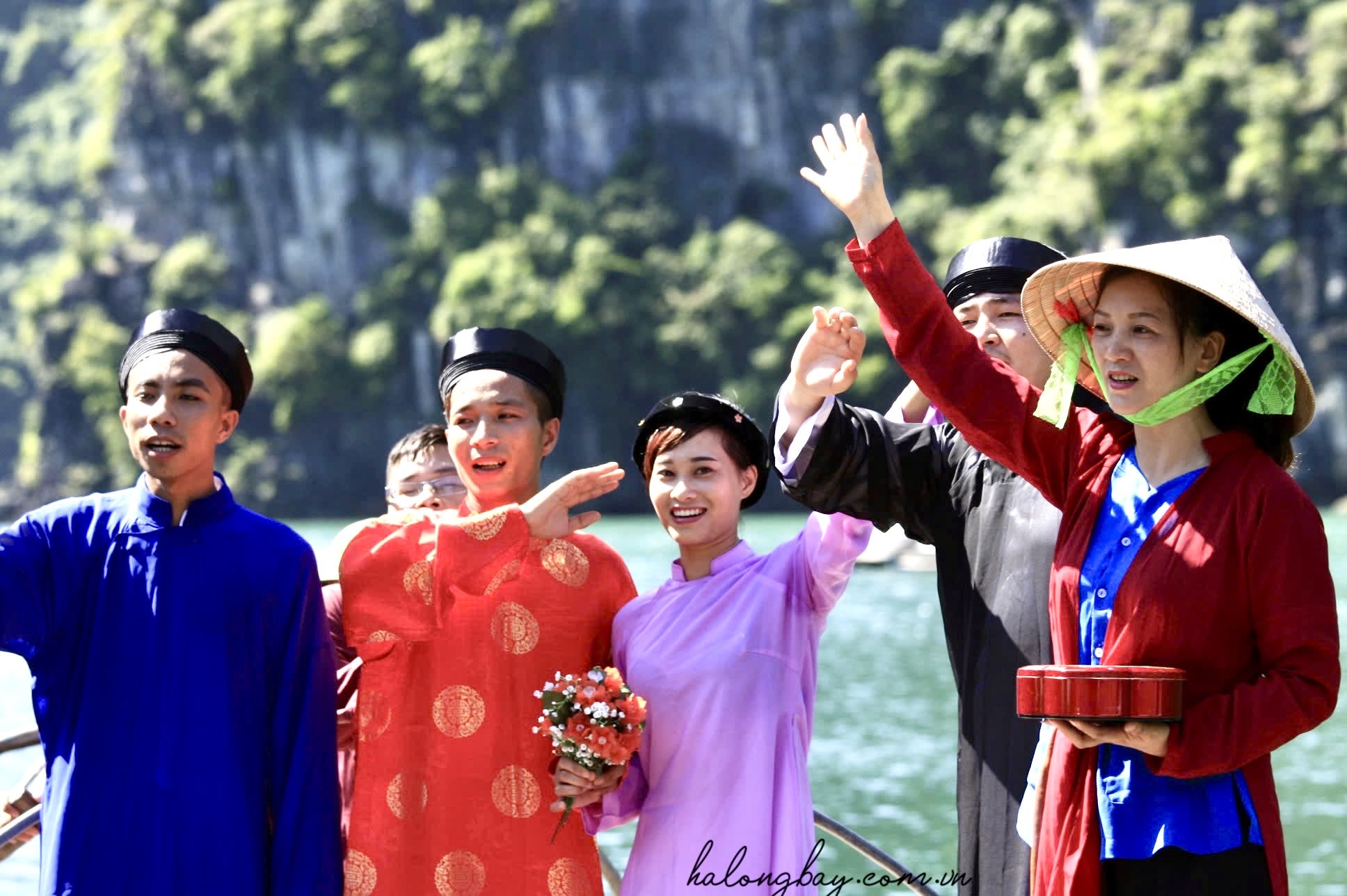New discoveries
in Ha Long Bay
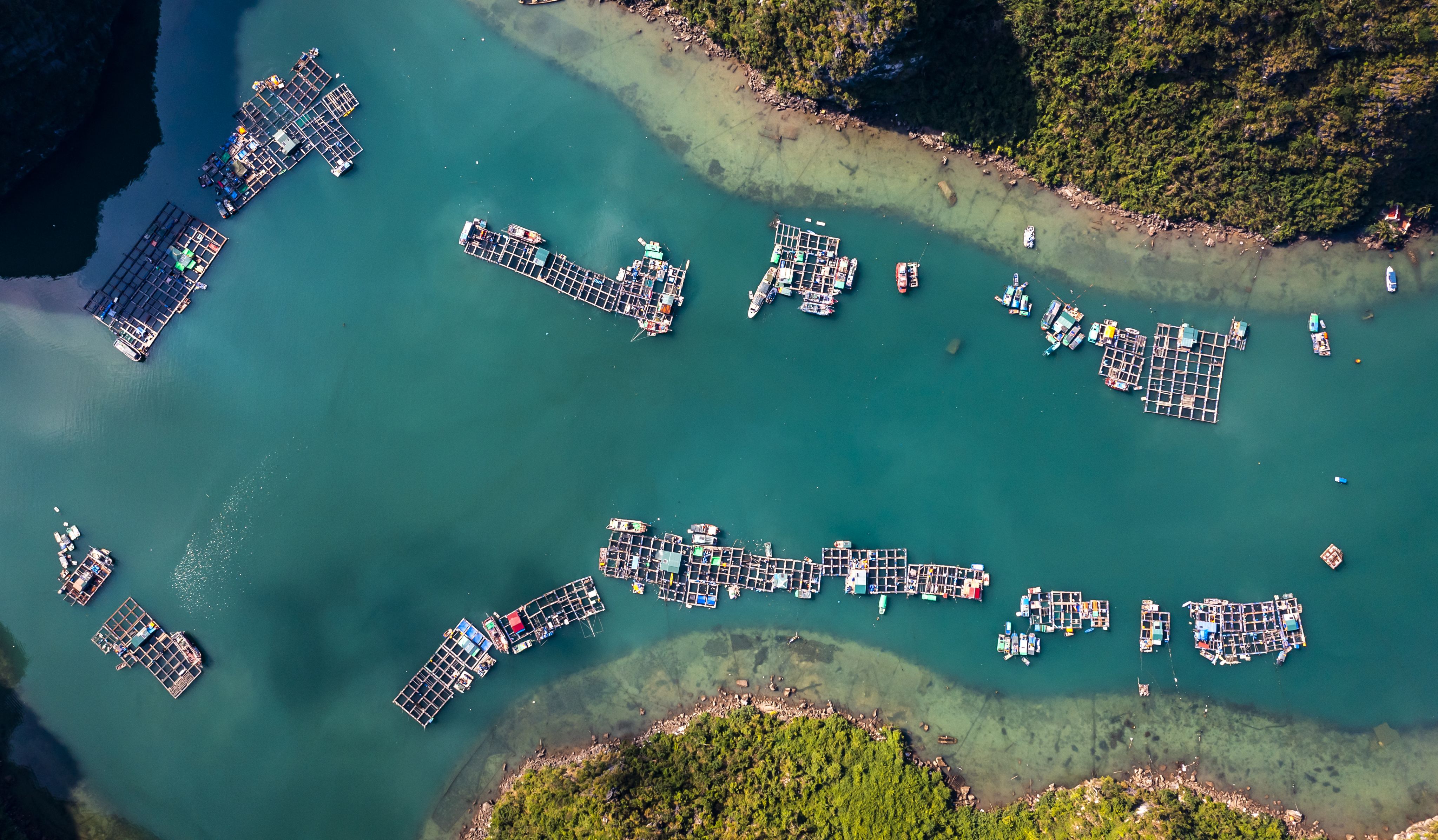
In 1994, Ha Long Bay was inscribed by UNESCO as a World Natural Heritage site for its aesthetic value. In 2000, UNESCO inscribed Ha Long Bay as a World Natural Heritage site for the second time, recognising its outstanding universal geological and geomorphological value. However, throughout the 30-year journey since becoming a World Natural Heritage site, many other values of the bay have been uncovered, most notably its biodiversity and cultural-historical values.
Biodiversity
According to the Ha Long Bay Management Board, Ha Long Bay is geographically connected to Bai Tu Long Bay and Cat Ba Archipelago, forming a marine island complex with many favourable natural conditions forming a diverse system of marine and island habitats. This is the foundation for Ha Long Bay’s biodiversity.
Scientists have assessed Ha Long Bay as one of the areas with high biodiversity value. The biodiversity value of Ha Long Bay is reflected in the diversity of ecosystems, the diversity of rare genetic resources, and the diversity of species composition.
Diverse ecosystems in Ha Long Bay.
Diverse ecosystems in Ha Long Bay.
According to the World Natural Heritage records of Ha Long Bay maintained by the Department of Cultural Heritage under the Ministry of Culture, Sports and Tourism, the geological environment formed by karst terrain is the foundation that gave rise to the bay’s other values, such as biodiversity, archaeological culture, and other human values.
Statistics from the Department of Cultural Heritage show that the total number of plant species living on the islands in Ha Long Bay is approximately over 1,000 species. Various plant communities have been discovered, including mangrove species, plants on sandy shores along islands, and species growing on mountain slopes, cliffs, mountain peaks, cave entrances or rock crevices.
21 rare terrestrial plant species found in Ha Long Bay have been recorded in the Red Book:
- Quyen ba truong sinh (Selaginella tamariscina)
- Rang duoi phung bon (Drynaria bonii)
- Dai mac (Chroesthes lanceolata)
- Thoi chanh bac (Alangium tonkinense)
- Son dich (Aristolochia indica)
- Hoa tien (Asarum glabrum)
- Tiet can (Sarcostemma acidum)
- Thu trang (Gymnostemma pentaphyllum)
- Hoe bac bo (Sophora tonkinense)
- Ma tien ca thay (Strychnos cathayensis)
- Ma tien long (Strychnos ignatii)
- Ma tien hoa tan (Strychnos umbellata)
- Binh voi dau (Stephania cepharantha)
- La khoi (Ardisia sylvestris)
- Rau sang (Meliantha suavis)
- Vuong tung (Murraya glabra)
- Bong moc (Sinoradlkofera minor)
- Sen mat (Madhuca pasquieri)
- Trong lau nhieu la (Paris polyphylla)
- Man nghe (Dioscorea collettii)
- Bach bo (Stemona saxorum)
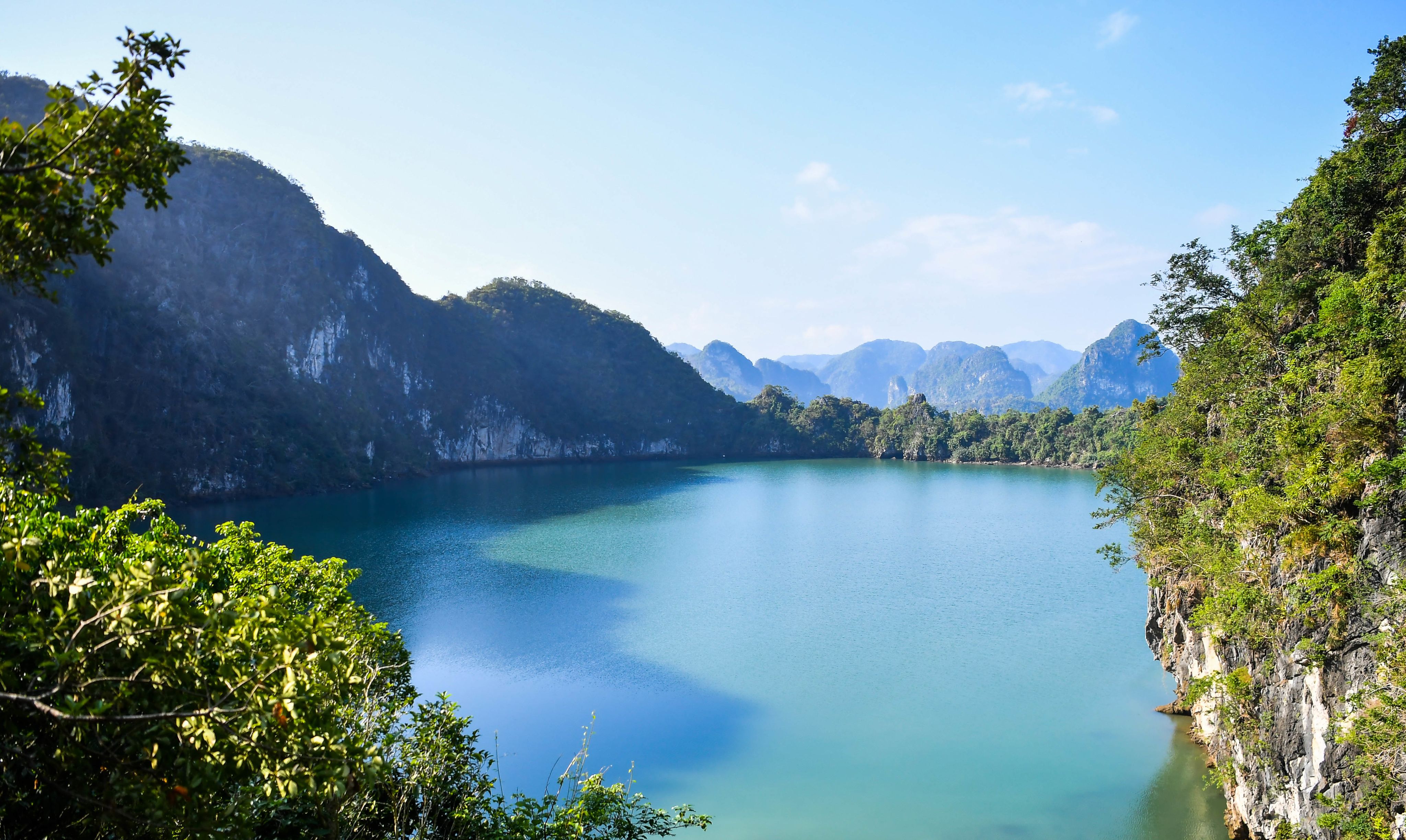
Paphiopedilum concolor flowers. (Photo: Ha Long Bay Management Board)
Paphiopedilum concolor flowers. (Photo: Ha Long Bay Management Board)
Researchers from the International Union for Conservation of Nature (IUCN) have discovered seven endemic plant species in Ha Long Bay. These species are only adapted to live on the limestone islands of Ha Long Bay and cannot be found anywhere else in the world. They are: Cycas tropophylla, Chirita halongensis, Livistona halongensis, Chirita hiepii, Impatiens verrucifera, Schefflera alongensis and Paphiopedilum concolor.
17 endemic plant species of Ha Long Bay have been discovered to date:
- Ngu gia bi Ha Long (Schefflera alongensis)
- Co Ha Long (Livistona halongensis)
- Tue Ha Long (Cycas tropophylla)
- Bong nuoc Ha Long (Impatiens halongensis)
- Cay ri mot cap Ha Long (Chirita gemella)
- Cay ri Ha Long (Chirita halongensis)
- Cay ri hiep Ha Long (Chirita hiepii)
- Cay ri on hoa Ha Long (Chirita modesta)
- Song bế Hạ Long (Paraboea halongensis)
- Sung Hạ Long (Ficus alongensis)
- Com nguoi chan Ha Long (Ardisia pedalis)
- Nhai Ha Long (Jasminum alongensis)
- An Dien Ha Long (Hedyotis lecomtei)
- Ngoai moc tai Ha Long (Allophylus leviscens)
- Nan ong Ha Long (Pilea alongensis)
- Rieng Ha Long (Alpinia calcicola)
According to statistics, the closed evergreen, tropical rainforest ecosystem in Ha Long and Bai Tu Long contains 477 species of magnolia, 12 species of ferns, and 20 species of mangroves.
The Ha Long Bay Management Board has successfully propagated several plant species. Among them, the Ha Long palm (Livistona halongensis) was developed into a scientific project by the Ha Long Bay Management Board and successfully propagated for planting on several islands of Ha Long Bay, such as Hang Trai, Cat Lan, and Ti Top. The Ha Long palm has also been propagated by Cat Ba National Park for planting on Cat Ba Island.
Additionally, the Ha Long Venus slipper has been successfully propagated with 100 plants on the slopes and cliffs at Cong Dam and Cua Van. To date, approximately 600 individual Venus slippers in these two areas have developed well, adapted to new living conditions, and created beautiful landscapes.
Sinoradlkofera minor trees are blooming brilliantly on Ha Long Bay. (Photo: Quang Ninh Province Information Centre)
Sinoradlkofera minor trees are blooming brilliantly on Ha Long Bay. (Photo: Quang Ninh Province Information Centre)
The Ha Long Bay Management Board has also successfully researched growth characteristics and conducted conservation breeding of the Sinoradlkofera minor tree, a narrow endemic species in Vietnam’s Red Book. As a result, to date, this flowering plant with beautiful clusters of flowers and fruits has been planted in large patches, displaying its colours at various points along the tour route, including 200 trees at Dau Go and Hon Luot, with more than 100 trees on islands such as Sung Sot, Ti Top, Me Cung, Bai Dong.
A characteristic of Ha Long Bay’s endemic plants is that most grow precariously on peaks or cliff faces, with root systems that grip tightly and deeply into rock crevices to survive. Some species bloom in spring, like the Ha Long palm. Others bloom in summer, like the Chirita halongensis and Ha Long cycad. These plant species have adapted to the environmental conditions and climate of the islands in Ha Long and have not been found anywhere else in the world.
Ha Long cycad
Ha Long cycad
Other endemic plant species in Ha Long Bay are likely to be added in the future, as no comprehensive research has yet been conducted on the flora across all the islands in Ha Long Bay and its surrounding areas.
For fauna, records indicate the presence of four amphibian species, ten reptile species, 40 bird species, and 14 mammal species.
Research over the years has shown that Ha Long Bay is home to more than 300 species of fish, 545 species of benthic animals, 154 types of coral, 35 species of plankton, 139 species of seaweed, five species of seagrass, and 31 species of mangrove plants.
Scientists have also discovered some endemic animal species unique to Ha Long, such as the Ha Long loach (Draconectes narinosus), found in Duc Tien Cave on Van Gio Island, a small and narrow island with its widest part being only about 400 metres.
The Ha Long eyelid gecko. (Photo: Quang Ninh Information Centre)
The Ha Long eyelid gecko. (Photo: Quang Ninh Information Centre)
Another notable species is the Ha Long eyelid gecko, previously recorded only on Cat Ba Island. This species was discovered in 2016 and 2018 by a research team from the Vietnam National Museum of Nature (Vietnam Academy of Science and Technology) and the Ha Long Bay Management Board on several islands in Ha Long Bay. This discovery was published in the internationally renowned scientific journal Amphibian & Reptile Conservation, following thorough field studies. Consequently, this species was updated in the IUCN Red List, further underscoring the biodiversity significance of this heritage site.
Regarding biodiversity conservation in Ha Long Bay, Vu Kien Cuong, head of the Ha Long Bay Management Board, stated that biodiversity conservation still faces challenges due to a lack of experts and resources. The management board lacks the expertise, equipment, and personnel to fully survey, assess, and implement biodiversity conservation projects.
“This is a significant weakness, and we recognise the need to develop detailed, in-depth, and accurate research proposals to devise effective solutions for conserving Ha Long Bay’s biodiversity. Currently, much of Ha Long's biodiversity value remains untapped and hidden,” Vu Kien Cuong affirmed.
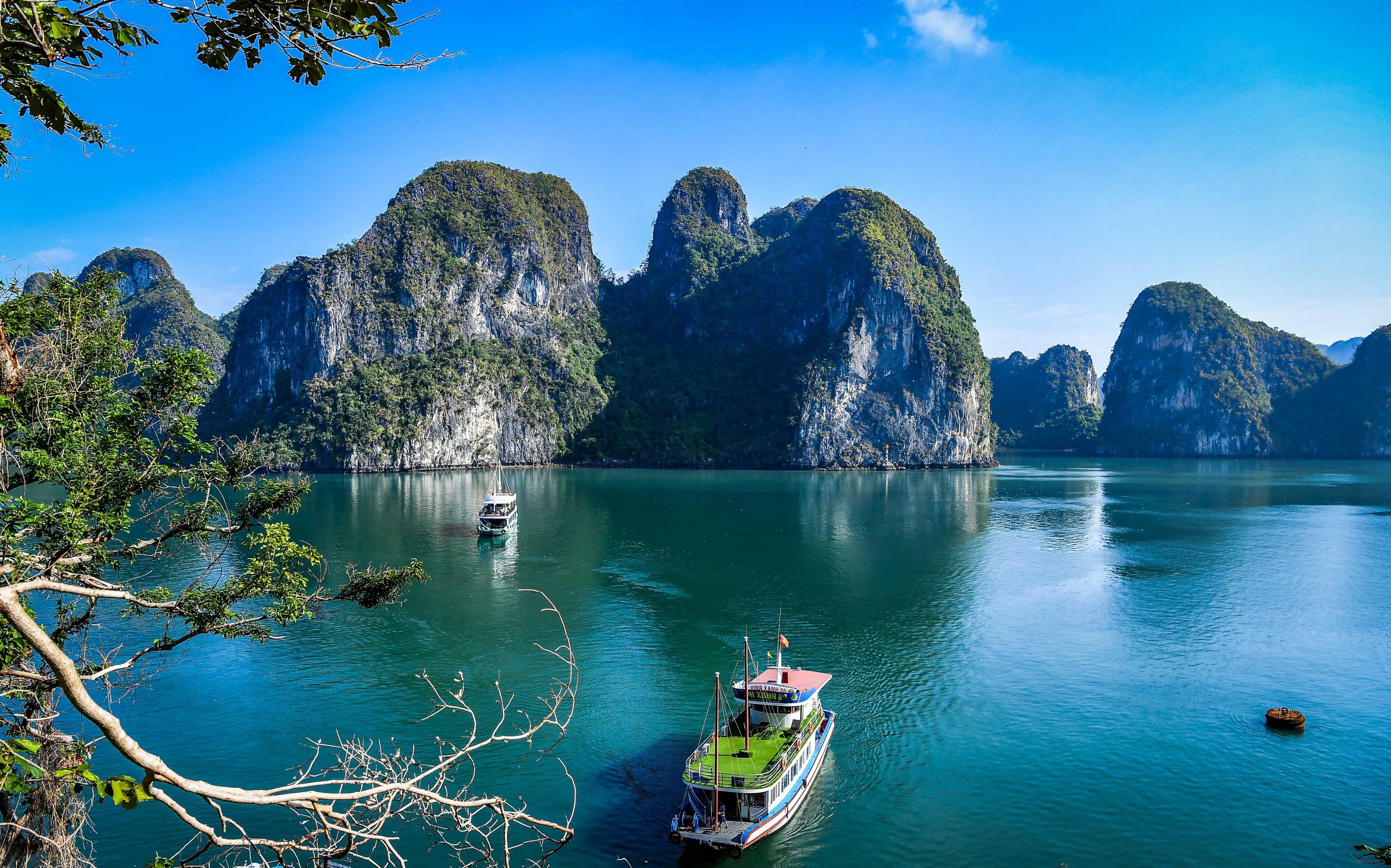
Ten unique ecosystems in Ha Long Bay
In addition to its globally unique geological and aesthetic values, Ha Long Bay preserves many characteristic ecosystems of tropical marine environments, such as forests, caves, mangroves, lagoons, coral reefs, and seagrass beds. These ecosystems thrive in a region with a relatively mild climate and seawater temperatures averaging between 19 and 25 degrees Celsius, offering a favourable environment for diverse species. These ecosystems contribute significantly to the biodiversity richness of Ha Long Bay.
Ha Long Bay hosts ten distinct ecosystem types specific to tropical limestone archipelagos.
Island vegetation ecosystem
This ecosystem supports the growth of 507 plant species (belonging to 351 genera and 110 families of vascular plants). Notably, 21 rare and endangered plant species are listed in Vietnam’s Red Book, and 17 endemic plant species have been recorded exclusively in Ha Long Bay, with no sightings elsewhere.
Lagoon ecosystem
This unique and distinctive ecosystem is typical of limestone island areas like Ha Long Bay, Bai Tu Long Bay, and Cat Ba Island. It consists of isolated lakes and water bodies situated on or within islands. These lagoons are separated from the external environment and surrounded by limestone islands, with vegetation-covered shores and vibrant marine life underwater. Species recorded in these lagoons include 21 algae species, 37 mollusk species, eight crustacean species, six echinoderm species, and several coral species. Due to prolonged adaptation to their isolated environment, many species in the lagoons exhibit unique and endemic traits compared to their counterparts elsewhere.
Cave ecosystem
The cave ecosystem is another distinctive feature of limestone marine regions. Cave environments are typically dark, humid, nutrient-poor, and maintain a stable temperature year-round, resulting in a less diverse biological community than other ecosystems. Most species are endemic to the area. However, they are critical in studying the evolutionary process of organisms. Some notable species discovered include the eyelid gecko, Ha Long cave crab, cave loach, and snapping shrimp.
Hard-bottom intertidal ecosystem
The hard-bottom intertidal ecosystem (also known as the intertidal ecosystem around the islands) is mainly comprises tidal flats with rocky reefs distributed around the foot of the islands in the Ha Long Bay area. The bottom is mainly cliffs, sea ridges, and in some places, pebbles and boulders sliding down from the mountains, stretching out 5–10m. Because the bottom is less changed, the environment in this ecosystem is relatively stable, with many caves and holes providing shelter and spots to hide from enemies, so the species composition of this ecosystem is very rich and diverse. There are about 423 species of organisms living and developing here, including seaweed, coral, snails, bivalves, reptiles, and crustaceans. Although the species composition is rich, the area is small, so the resource value (productivity) of marine life in this area is not high. Notably, there are Sarrgassum spp, snails, and oysters, but they are only valuable for daily meals at local markets.
Soft-bottom intertidal ecosystem
The soft-bottom intertidal ecosystem is the low-tidal flats around the coastal islands of Ha Long Bay. Based on the characteristics of the bottom, there are 2 types: the intertidal flat, which comprises the silty sand, mud and clay adjacent to mangrove forests; and the sand dunes, with sand bars emerging outside the river mouth.
The low-tidal ecosystem has a complex ecological environment, changing seasonally and by time of day, according to the fairly large tide. Due to the complex environmental conditions of the soft-bottom estuary ecosystem, the species composition of the biological community is poorer than that of the intertidal zone of offshore islands. The biological community here is divided into 2 different groups. The group living permanently on the intertidal flats includes benthic animals, seaweed, seagrass, marine fish; while groups living in the water layer that migrate with the tide include phytoplankton, zooplankton, and marine fish. In addition, some vertebrates also live and feed on the estuarine intertidal zone when the tide recedes, such as water snakes and water birds.
Sand tidal flat ecosystem
The sand tidal flat ecosystem is a sandy tidal flat along the hollows of small islands, some areas of sand flats are sheltered and have coral reefs developing underneath. Although the number of sand tidal flats is quite large, due to the limestone island terrain often having steep cliffs, the flats are small, steep, and composed of sand and shells of organisms such as corals and mollusks (snails, clams, mussels). The flats are often exposed when the tide is low. The species composition on sand tidal flats is quite poor compared to other types of ecosystems and the resource value is not high. The basic characteristic of sand tidal flats is that there is almost no zonal distribution of organisms due to the unstable bottom. The animals found in this ecosystem include ghost crabs, sea urchins, polychaetes, bivalves, snails, crustaceans, and echinoderms. A total of 116 species of organisms have been discovered on sand tidal flats in the region.
Mangrove ecosystem
Mangrove forests are an important ecosystem, home to many valuable seafood species in the Ha Long Bay area. Ha Long Bay and its vicinity have 30 species, accounting for about 32% of the species composition of mangrove plants in Vietnam. Among the 500 species of organisms living in the mangrove forests in Ha Long Bay, there are 3 species of snails, 3 species of reptiles, 3 species of birds, and 1 species of mammals listed in the Vietnam Red List. Some species of seafood with high economic value such as cockles, sea worms, octopus (shrimp), clams, and crabs, have contributed to the creation of unique seafood dishes in the locality.
Seagrass ecosystem
An important marine ecosystem. Seagrass beds are the place to raise larvae and settle many species of shrimp, crab, and fish. At the same time, the seagrass ecosystem also plays an important role in stabilising the bottom and treating wastewater. According to some previous studies, 5 species of seagrass have been discovered in the Ha Long - Cat Ba Bay area. However, currently the area of seagrass beds in Ha Long Bay has been greatly reduced due to sea reclamation projects, and there are almost no seagrass beds left in coastal areas, thus, the value of this ecosystem cannot be exploited.
Permanent coastal wetland ecosystem
Permanent coastal wetland ecosystem is the water surface with a depth of 0–20 m. This is a relatively homogeneous body of water, so the ecosystem includes many different groups of species such as phytoplankton, zooplankton, benthos, marine fish, reptiles, crustaceans, and molluscs. Among them, many species have economic value, such as sea crabs, mantis shrimp, and sea bass.
Coral reef ecosystem
The coral reefs in Ha Long Bay are mainly composed of hard corals. The areas with the most coral are Cong Do, Tra San, Hang Trai, and Dau Be (with coverage from 30% - 45%). Some marine species with important economic value live in the coral reef ecosystem such as geoducks, razor clams, groupers, pearl oysters, and lobsters.
In addition to species with economic value, the coral reefs also have many endangered and rare species listed in the Vietnam Red List such as wrinkled duckweed, spiny seahorse, Japanese seahorse, black seahorse, flat-branched horn coral, top hole coral, spiny-tailed horseshoe crab, male and female snails, spiral snails, black-lipped pearl oysters, cuttlefish, and tiger-striped cuttlefish.
Unique marine culture
Dr Ha Huu Nga, an expert in archaeology and culture, said that in prehistoric and early historical times, the society in the Ha Long-Cat Ba area was organised based on communities living along the coast and islands from Hai Phong to the northeast, stretching to the Ka Long estuary. It can be said that this is one of the oldest marine human ecosystems in Vietnam.
Cau Vang Temple in Cua Van.
Cau Vang Temple in Cua Van.
Ha Long residents mainly settled around the Bach Dang - Chanh River, the Cua Luc, Tien Yen, Ha Coi and Ka Long river mouths. Their livelihood came from forests, rivers, bays, and seas. Therefore, Ha Long - Cat Ba people worship all the powers of nature, especially the sea, supernatural forces, and the deceased, considering them powers that control their spiritual lives, making them grateful, fearful, respectful and worshipping. This became a system of beliefs, faiths and religions with distinctive identities.
According to Professor Nguyen Van Kim, regarding the sea, the local community is indebted to the sea gods because the gods bring them a source of life. On the other hand, they also have to constantly confront the unusual changes of nature. Therefore, the sea residents have a whole system of gods, including Human gods, Natural gods, and Angels. The Ha Long Bay area still has many historical relics and cultural sites, such as Quan Lan Communal House, Lam Pagoda, and Ba Men Temple.
Fishermen on Ha Long Bay prepare offerings to pay gratitude to the gods of the sea at the end of the year. (Photo: Quang Ninh Provincial Online Portal)
Fishermen on Ha Long Bay prepare offerings to pay gratitude to the gods of the sea at the end of the year. (Photo: Quang Ninh Provincial Online Portal)
In the traditions and cultural lifestyle of coastal communities, many legends about the sea are still preserved. Every year, they still organise boat racing festivals, buffalo fighting festivals, and rituals to worship Whale, Can Hai Dai Vuong, Tu Vi Thanh Nuong and many other sea gods. Those festivals, cultural activities and beliefs are not only people's respect for the power of nature but also a way to thank the Sea God for bringing them a source of livelihood and protecting their lives.
A folk duet singing performance by young members of Cua Van Cultural Centre.
A folk duet singing performance by young members of Cua Van Cultural Centre.
Professor Nguyen Van Kim believes that the residents of Ha Long - the Northeast Sea islanders, have rich and in-depth knowledge about the sea. They understand the monsoon regime, the rules of tides and sea currents, boats and boat-building techniques, fishing areas, fishing routes and fishing and salt-making times, seafood processing methods and marine culinary culture, the psychological and spiritual life of coastal residents and the system of temples and shrines worshipping sea gods, the marine culture (poetry, folk songs, duet songs on the sea) and the social relationships between people and the sea.
In particular, the people of Ha Long coastal area still preserve unique and rich traditional cultural features, which can be seen through folk songs, proverbs, festivals, experiences, reflecting thoughts and feelings from generation to generation.
These are intangible cultural values of coastal areas, such as folk songs, wedding songs, duet love songs, sea songs and many traditional rituals such as the boat-raising ceremony and the Neu (bamboo pole) tree installation ceremony.
These are typical marine cultural heritages of Ha Long - Tonkin Gulf, formed early in history and have been constantly supplemented and created through generations.
One of the special features of Ha Long Bay is the floating fishing villages, where residents live entirely on the water rather than on land. This is a unique living model of the Ha Long people, considered a distinct cultural feature closely linked to the sea and aquatic life.
Re-enactment of the life on boats, carried out by Cua Van Cultural Centre. (Photo: Ha Long Bay Management Board)
Re-enactment of the life on boats, carried out by Cua Van Cultural Centre. (Photo: Ha Long Bay Management Board)
These fishing villages, such as Cua Van fishing village, serve as living places and unique cultural spaces where generations have developed special community values such as close-knit relationships between families, mutual support, and distinctive forms of daily life.
Floating fishing villages, such as Cua Van and Ba Hang, have existed for centuries on the bay, with their unique customs, practices and traditions.
Nguyen Thi Minh, a tour guide at the Cua Van Cultural Centre, is also one of the children of the Cua Van fishing village who is working to introduce the unique cultural features of the fishing village to domestic and international tourists.
Nguyen Thi Minh, a child of the fishing village, talks about the unique customs of her village.
Nguyen Thi Minh, a child of the fishing village, talks about the unique customs of her village.
The customs of the people in the floating fishing village are what Minh finds most interesting to introduce to tourists, from weddings, engagements, the customs of welcoming a new-born or sending off the deceased, to the folk songs in weddings, festivals, or the duet songs that fishermen sing to catch up with each other when fishing at sea.
Male:
Above and below the clouds is Ga Choi Islet
Singing this tune, I call you.
The words we sang just yesterday,
Let’s sing them again—come without delay…
Female:
Which boat whistles sharp and sweet
Dawn’s yet to break, the moon's retreat.
If your heart is true, wait and see,
Anchor your love by the shore with me.
(A traditional call-and-response folk song of fishermen on the Bay)
The Ba Men Temple Festival is in early spring. (Photo: Hạ Long Bay Management Board)
The Ba Men Temple Festival is in early spring. (Photo: Hạ Long Bay Management Board)
In Hạ Long Bay, numerous temples embody the spiritual and cultural beliefs of the local fishing communities, such as Ba Men Temple, Cau Vang Temple, and Dau Moi Temple. Before setting out to sea or undertaking important events, including weddings and funerals, fishermen hold ceremonies to honour the water deities, praying for good fortune, smooth sailing, and luck. Annual festivals are held, such as the Cau Vang Temple Festival on the 16th day of the 4th lunar month and the Ba Men Temple Festival on the 19th and 20th days of the first lunar month.
Fishermen’s wedding is reproduced. (Photo: Ha Long Bay Management Board)
Fishermen’s wedding is reproduced. (Photo: Ha Long Bay Management Board)
Nguyen Thi Minh, a resident of the former Cua Van fishing village, noted that rituals in the fishermen's community differ significantly from those on land. For instance, during weddings, the groom’s family must perform call-and-response singing to fetch the bride. The bride’s family traditionally hangs three silk ribbons, symbolising "three passageways": golden silk for the "guest path", green silk for the "hanging path", and red silk for the "flower path". To gain entry, the groom’s family must enlist skilled singers from their village to engage in singing and gradually "unlock" these symbolic passageways on the bride’s boat.
Moreover, the fishing villagers are highly skilled in observing natural signs, such as the sky and the sea, to predict weather conditions and determine the directions of fish schools for efficient fishing.
One of the valuable traditional practices passed down through generations is the use of folk remedies derived from plants growing on the high mountains within the bay. Nguyen Thi Minh explained: "In the past before motorboats and other convenient transportation methods existed, fishermen relied on the plants available in the area to create herbal remedies whenever they fell ill. These traditional remedies have been handed down through many generations and remain in use today".
Ba Men Temple is located in the southern part of Ha Long Bay, about 30 kilometres from the Tuan Chau International Passenger Port. According to the tales of Ha Long’s fishermen, long ago, a woman named Men encountered a storm while fishing, causing her boat to capsize. Her body drifted to the northwest cove of Dau Be Island in Ha Long Bay. Out of compassion, the fishermen retrieved her body, gave her a proper burial, and built a small temple in her honour. Ever since those who prayed at the temple for guidance have found their wishes fulfilled and their ventures successful. Initially, the temple was a small grass-roofed shrine. In 1985, Nguyen Van Mien from Cat Ba, Hai Phong, funded the construction of a more robust structure. The temple underwent renovations in 2006 and significant repairs in 2019, preserving its sanctity and ensuring it remains a site of cultural and spiritual importance.
The Ba Men Temple Festival consists of two parts: ceremonial rituals and festive activities. The ritual portion involves fishermen conducting sea worship ceremonies. The festive part includes traditional games such as tug-of-war and boat racing. Before the festival, fishermen from various areas converge on the temple, anchoring their boats tightly in the sea near its entrance. Each family prepares an offering tray to present at the temple, praying for a year of calm seas, favourable weather, and successful livelihoods. After the ceremony, they stay to cheer on the tug-of-war and boat racing teams.
The unique cultural values of the Hạ Long Bay region are cherished and preserved by generations of residents, contributing to the vibrant and multifaceted beauty of this "precious jewel" of Ha Long. These values also hold endless fascination for researchers and enthusiasts who celebrate and honour the national cultural identity.
Newly surveyed tourist attractions in Ha Long Bay
In addition to its cultural treasures, new destinations such as caves, islands, and beaches have been surveyed, explored, and assessed by the Ha Long Bay Management Board for potential future tourism development. As emphasised by Vu Kien Cuong, Head of the Management Board, the current tourism efforts utilise only about 20% of the bay's potential. These newly surveyed sites will significantly enhance the diversity and allure of Ha Long Bay, ensuring its continued growth as a world-class destination.
Newly surveyed caves and beaches
Located on the Dau Go Island range, Thien Long Cave is an archaeological site linked to the Soi Nhụ culture (dating back 18,000–7,000 years ago). It is well-suited for developing services that combine archaeological tours with experiences exploring the cave's landscape and geological and geomorphological features.
Situated on Veu Islet, Hoa Cuong Cave is adorned with stalactites, stone pillars, stone curtains, fringe stalactites, and cave pearls. It is ideal for developing services focusing on cave exploration while appreciating its geological, geomorphological, and scenic values.
Hang Hanh Area (consisting of Hanh Cave and Ang Hang Hanh) was found on Bom Me Islet. It boasts an intricate stalactite system. Ang Hang Hanh is a stunning saltwater lake covering about 14 hectares, connecting to the outside via an underwater tunnel leading to Ba Cua Cove. This area is suitable for developing eco-tourism services centred around cave exploration and the Tung Ang ecosystem. In the future, if docking stations are established along the shore, nighttime events and banquets could be hosted within the cave.
Ang Vung Ong is located on Vung Ong Island; with its rich flora and fauna, it is suitable for developing services for visitors to the Tung Ang ecosystem.
Dai Thanh cave area (Dai Thanh Cave and Dai Thanh 1 and 2) is located on Vung Chau Island. It is one of the areas with high biodiversity value with typical ecosystems of tropical seas, such as: a vegetation ecosystem on the island, an ecosystem of regularly flooded areas along the foot of the island, a cave ecosystem, and a mangrove ecosystem. It is suitable for developing services to visit caves and explore the Tung Ang ecosystem.
Lom Bo Island is one of the rare land islands in Ha Long Bay. Currently, the island has a rich orchard, ornamental trees, and timber trees. On the hillside, at the foot of the island, there is a natural sandbank, a road embankment, ornamental trees, and a natural freshwater system. On the island, there is a large-scale cave with aesthetic value and a bathing beach, suitable for developing eco-tourism, cave tours, beach services, and organising snacks on the sand connecting to the invested accommodation in the Hon Lom Bo area (about 500m away).
Dinh Thu Cave is located on Bo Hon Island; with a fairly large scale and featuring a system of stalactites in the cave that are diverse in size and shape, it has high aesthetic value and is suitable for developing cave visiting services in a natural form (using a flashlight to explore yourself).
Trong Cave is located on Cay Chay Island, with an open space, wild natural scenery, moss, and antiquity. Trong Cave is also an archaeological site of the Soi Nhu culture (18,000-7,000 years). A flat wooden floor system has been installed on the cave floor.
The Trinh Nu Cave area (Virgin Cave and Virgin Cave Sandbank) is located in the Northeast of Bo Hon Island range, with beautiful scenery and pristine beaches. The cave is an archaeological site of the Ha Long culture, about 4,500 years ago.
Ho Dong Tien Cave and Ho Dong Tien Pond are located on Bo Hon Island range, with a diverse stalactite system. Going through the cave, you will reach a lake called Ang Tien, which is actually a karst funnel with the bottom flooded with seawater. Ang is discreetly surrounded by limestone mountains.
The Ho Dong Tien - Trinh Nu Cave area is designated as an entertainment area in Ha Long Bay and is one of five clusters of overnight anchorage points in Ha Long Bay.
Ang Bu Xam, located on Bu Xam Island, is one of seven conservation areas of Ha Long Bay special-use forest, and is suitable for developing research and study services.
The Ang Du area (Ang Du and Ang Du Sandbank) is located on Hang Trai Island, with sand, mud, lots of seaweed, shrimp, and fish, with no circulation with the surrounding environment. Here, 4 species were found to be distributed only in the Ang Du area. In front of Ang Du is a natural sandbank, with waves all year round, and features an open and pristine landscape, untouched by humans.
Coc Cheo Sandbank (in the Hang Trai Island area) is located on Hang Trai Island, with pristine, quiet landscape, surrounded and sheltered by vertical cliffs with myriad shapes intertwined like a magical maze. The Hon Coc Cheo Sandbank area (in Hang Trai Island area) is the place where famous director Jordan Vogt-Roberts chose to shoot some scenes in the Hollywood blockbuster “Kong: Skull Island”.
The Ba Ham Lake area on Dau Be Island is a system of 3 sea bays with vertical walls, connected in pairs through 3 narrow, winding caves like tunnels. When the tide rises, the caves are flooded, creating walls separating the inner lakes from the outside world. This area also has an evergreen forest ecosystem on limestone mountains, characterised by drought-resistant plants, with roots that cling deep into the cracks on the vertical cliffs.
The sandbank area located on Dau Be Island includes many sandbanks and is one of three areas of operation for discovery cruises.
Tam Cung Cave is located on 365 Island, with a rich stalactite system, suitable for developing cave tours in the form of self-exploration.
Vung Gianh Cave is located on the East side of Vung Gianh Island, with the cave floor being an ancient karst floor with accumulation of reddish-brown sediments. It is suitable for developing cave tours.
Hang Cap Lom is located on Cap Lom Island. Traces of writing on the cave walls show that this was probably one of the starting points of the Ho Chi Minh trail at sea during the fierce years of the war against the US.
Hon Luoi Liem Sandbank is located on Hon Luoi Liem Island. It is part of the project on investing in the preservation and restoration of the coral ecosystem combined with the development of ecotourism products and services and community culture in the area of Vung Ha - Bo Dung - Luoi Liem.
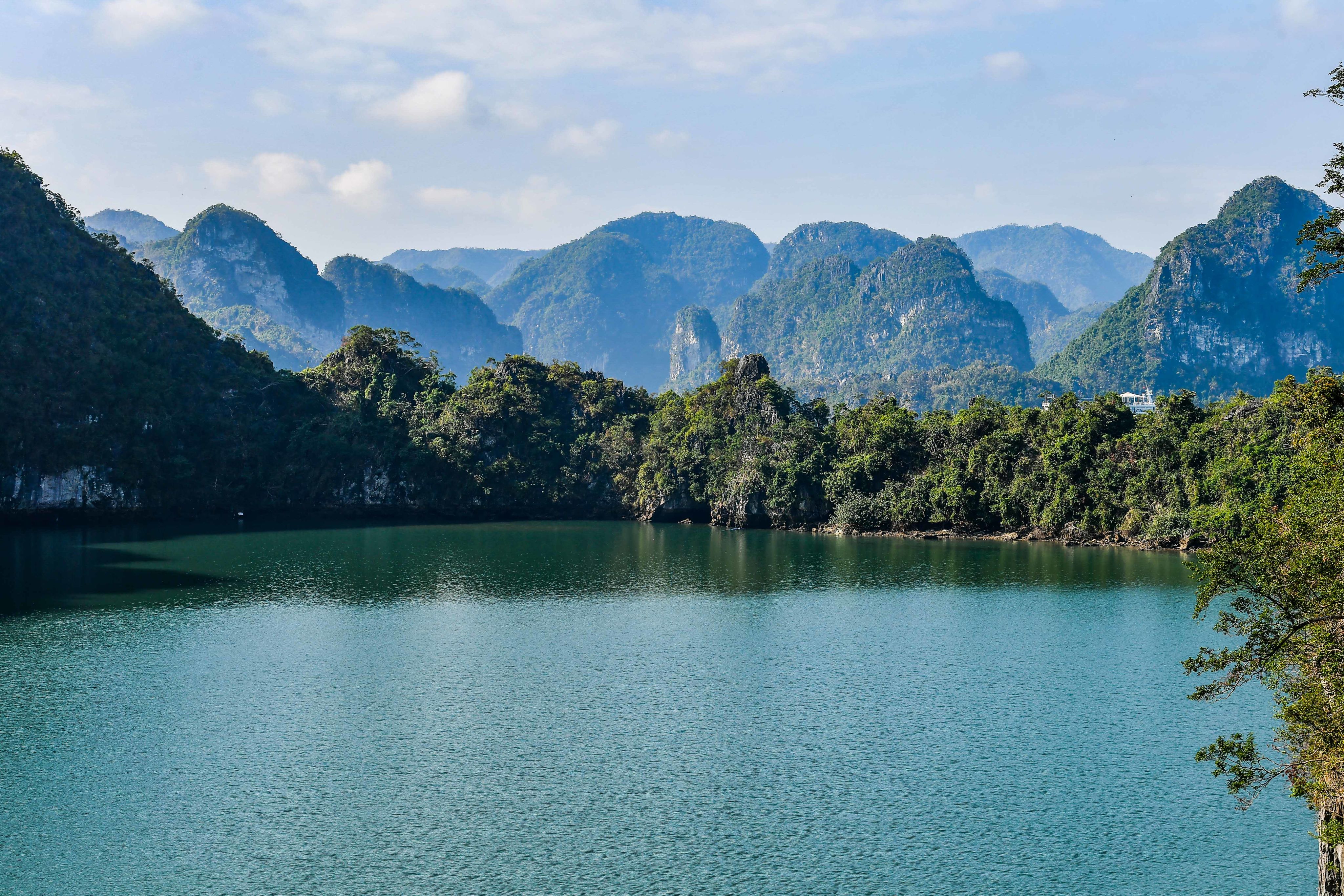
Published: December 2024
Content: TUYET LOAN, QUANG THO
Photos, documents: THANH DAT, TUYET LOAN, Ha Long Bay Management Board, Quang Ninh Newspaper, Quang Ninh Provincial Information Centre
Design: NGOC LINH
Translation: NDO
